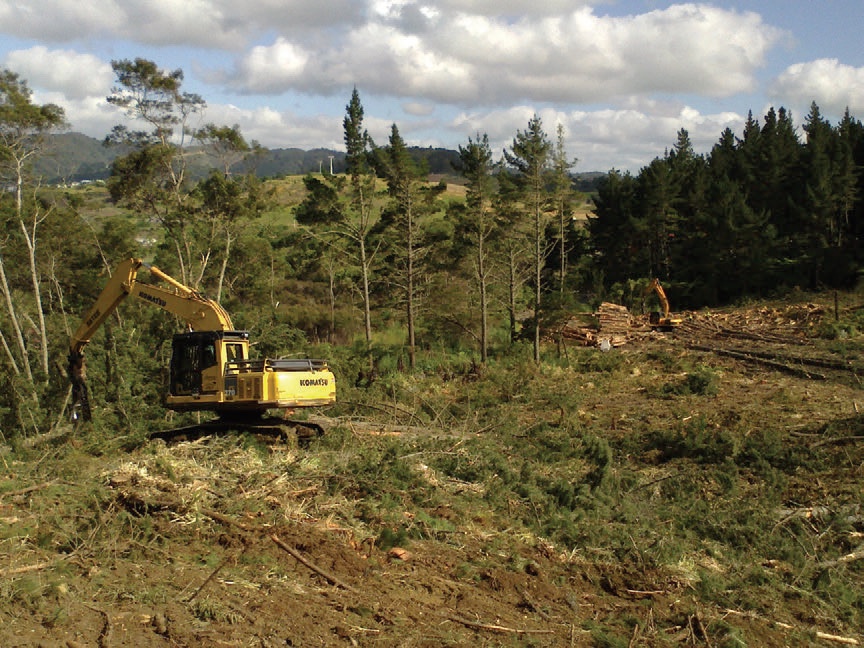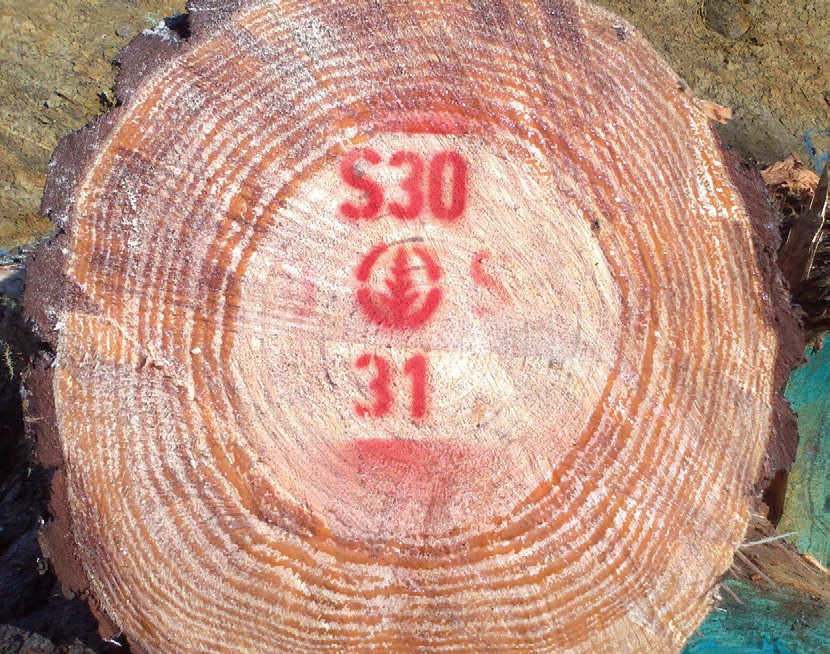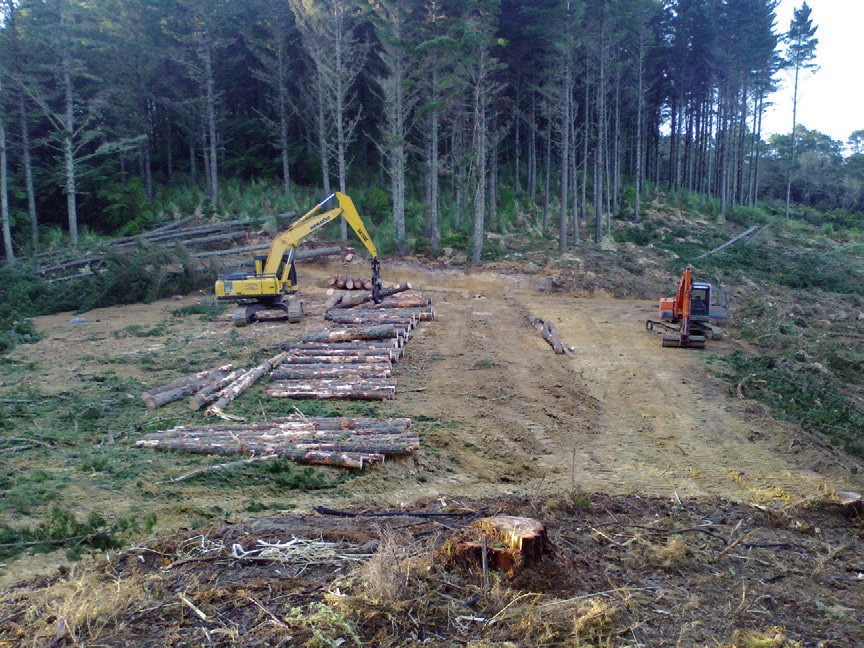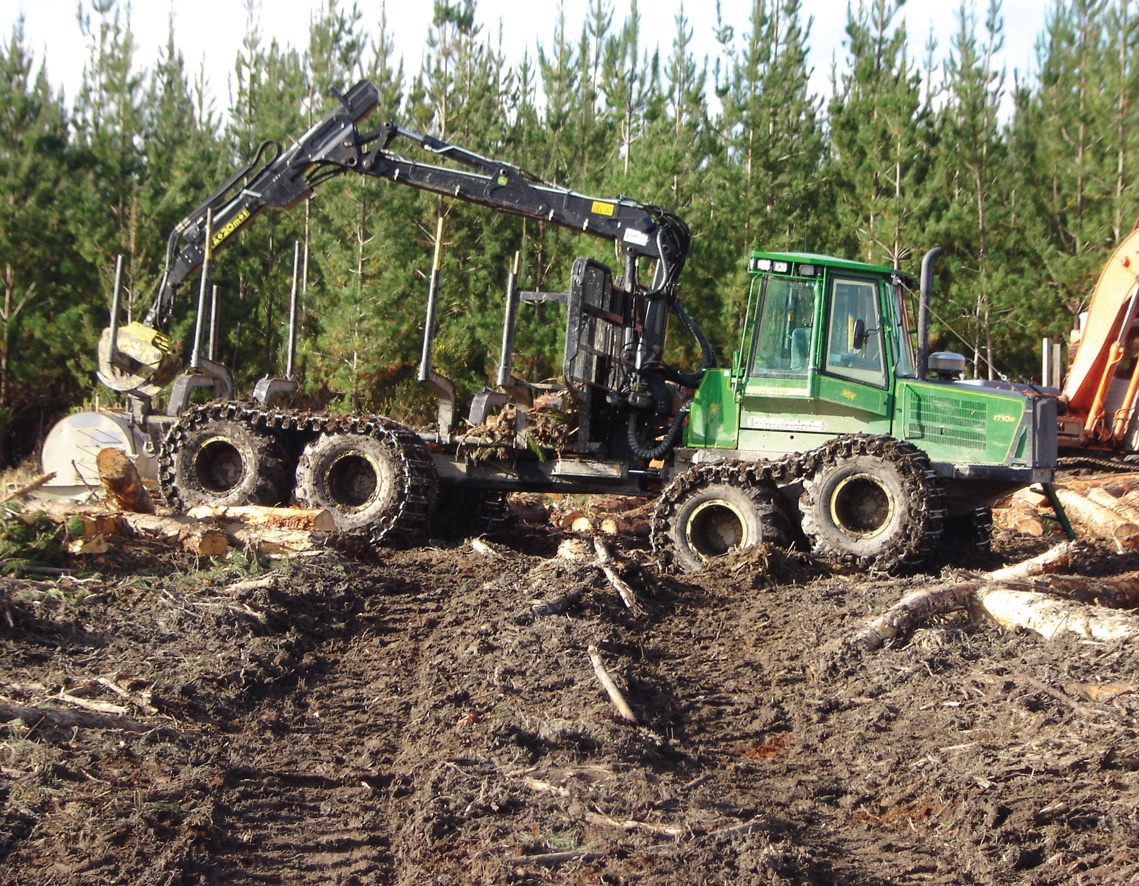Time to harvest that woodlot?
Jeremy Waldegrave, New Zealand Tree Grower February 2013.
Harvesting a farm woodlot is often the finale to years of input and interest given to your block of trees. The planning, the harvesting and marketing of your woodlot is the crunch time for the level of return you realise from your investment – often sweat plus dollars.
Thorough pre-planning is critical to make sure the process runs smoothly as the last things you want are surprises – either operationally or financially. So what needs to be planned, and how can the operations be managed to minimise risks and maximise rewards? The main components of a well-managed harvesting and marketing plan are –
Harvest planning
Effective harvest planning involves looking at the characteristics and constraints of the forest, along with the objectives of the land owner. They you can determine the most cost-efficient method to harvest the forest. There is a balance to find, such as between the haul distance versus number of landings and length of road, or hauler versus ground-based logging. The harvest planner will use their experience and knowledge to consider the cost of each harvest plan alternative.
The costs usually encountered are for roading, machine transportation, harvesting, log cartage, cleaning up the site, fence re-instatement and complying with permitted activity rules or resource consent rules. It is important to look at the total cost overall and not focus on a single item. The cheapest harvest rate available, for example, may result in the highest roading costs.

The resulting final harvest plan should contain –
- The recommended harvest method – the optimum harvesting equipment and systems to log the forest
- Engineering requirements for road and landing layout, specifications for the engineering standards expected, a summary of the estimated earthwork quantities including length of road, the number of landings, and the estimated volume of earthworks
- Health and safety information, with significant hazards identified on-site by the planner and recommended controls
- Environmental information concerning relevant district or regional council rules and how the planned work relates to these, significant environmental hazards and recommended controls, along with minimum environmental standards for contractors to operate. These harvest plan requirements need to be shown on a map of the forest at an appropriate scale, and accompanied by written notes explaining critical information. It is important that all contractors working on the site have a copy of the harvest plan, are inducted to the site to allow explanation of the requirements, and fully understand the requirements and expectations to prevent future problems.
If the woodlot is small, perhaps only a hectare, there is no need to comprehensively document all the above. However, considering all the options and evaluating what the overall cost will be is important, and is a good discipline to ensure there are no surprises and that all options have been considered.

Contractor selection and supervision
The selection of the contractors to undertake roading, harvesting and log cartage is a critical step to ensure confidence that the jobs will be undertaken to a professional standard. The selection criteria used when evaluating contractors may include −
- Experience in similar jobs and references for recently completed work
- Machinery compatibility which can undertake the work
- Health, safety and environmental compliance history, and management systems and training, to give confidence they will do what they say they are going to do
- A price to complete all the required work with all of the work priced and any conditions attached to the offer.
Contract
A contract should be created to put down on paper what the responsibilities are, ensuring clarity and assurance. It is important that you know what the price quoted for any job allows for. Ask plenty of questions to ensure your expectation matches the contractor’s understanding of the scope of the job.
Hopefully, in most circumstances, the contract will not be required for punitive measures as the work progresses. However, there are enough bad news stories where the contractor relationship was not formalised and one side has had problems. Most harvesting and marketing agents will have standard contract templates, eliminating the need for you to have your lawyer create one if you decide to use an agent.

Good supervision
The roading and harvesting operations should be closely supervised by someone who is experienced to ensure the jobs are undertaken to the standard expected and previously agreed. With harvest time being the make or break period in the forest cycle, it is very important that the forest owner’s risk is managed as there are many areas where value can be lost.
Forest roading is an area where significant cost can be added if pre-planning and implementation are not managed well. The management of forest roading projects is a specialised area which should not be taken on lightly if you have no experience in this work. Costs can double, leading to severe disappointment.
A good harvest manager will identify potential problems before they arise, adding value for the forest owner by avoiding unnecessary costs. From previous experience they will also understand realistic costs for all harvesting-related activities and negotiate a fair and reasonable rate for these.

Environmental compliance
It is a minimum requirement to comply with environmental legislation for good land stewardship. Most people have a reasonable awareness that good environmental practice in the primary industries is increasingly becoming a worry. Pleading ignorance to council compliance officers about lack of knowledge of plan rules is no good. You need to be fully aware of the rules and how the planned activities fit within them.
When the harvest plan is complete and the best method to harvest the forest has been chosen, the planner will have enough information to determine if a resource consent is required from your district or regional council. There is a wide degree of variation between district and regional rules across the country relating to forest harvesting activities.
It is important to carefully read through the council soil and water plan, or sediment plan as it is often referred to. Most forests will be designated under district council plans, to determine which rules relate to your property and the planned activity. Most councils have special areas identified, which adds another level of the plan that often needs to be checked.
Resource consents
In a typical situation you check if the harvest plan can comply with the permitted activity rules in the current regional or district plan. If the activity does not meet a specific rule, you will need a resource consent to cover that activity.
For example, vegetation clearance or harvesting of exotic forestry may be permitted, subject to it being conducted to the environmental standards specified. If the road and landing earthworks are greater than 5,000 cubic metres a year in Northland, then the earthworks activity needs to be consented.
If a resource consent is needed, the level of detail for the assessment of environmental effects needs to reflect the significance of the planned work. Small projects in benign environments can therefore get away with less information than is required for a site next to a major waterway with a high volume of earthworks.
Once the site is operational, the conditions of the resource consent or permitted activity rules must be complied with. Having a resource consent does not provide the opportunity to operate at sub-standard levels.
Marketing plan
The ability to develop a good marketing plan for the forest produce starts with having a sound knowledge of what the forest holds. A pre-harvest inventory can provide an estimate of yield by log grade. It is often the case with smaller woodlots that an experienced eye makes a visual estimate of the proportion by log grade and of the tonnes per hectare.
With this information the log produce is marketed to various sales options available in that particular region, with the objective of maximising overall revenue. Most regions will have some domestic and export sales opportunities available, which each have a different requirement for individual log grades and prices.
It is important to have a good knowledge of what each log customer requires, and the general demand for each log grade, to feed into your negotiation strategy. A thorough knowledge of market requirements and log price trends will mean that the harvest production can be managed to maximum benefit for the owner. One example can be to target a structural stand when domestic structural grades are at a premium. Another could be to targeting rough stands when pulp prices are at high levels.
The marketing plan should determine the highest net revenue sales options which take account of varying cartage rates to each customer. In some circumstances, an agent can use knowledge of demand to increase the net revenue for those log grades.
Plan well ahead
In summary, there is the potential for a number of pitfalls if the harvesting and marketing of a woodlot is not managed professionally. The key to success is to thoroughly plan ahead so that your forest is ready to go when the time suits, and make sure appropriate supervision is in place to look after your interests. The objective needs to be clear – minimise costs and maximise revenue.
The best advice is to discuss your harvest with a forestry professional and get references from other forest owners you know who have experienced the process. Learning as you go along and doing it yourself is not a good idea. By the time you have learned the ropes and made mistakes, the job is finished and significant opportunities could have been missed.
Jeremy Waldegrave is Director of ForestLand Ltd, a Northland-based harvesting and marketing company.

 Farm Forestry New Zealand
Farm Forestry New Zealand

